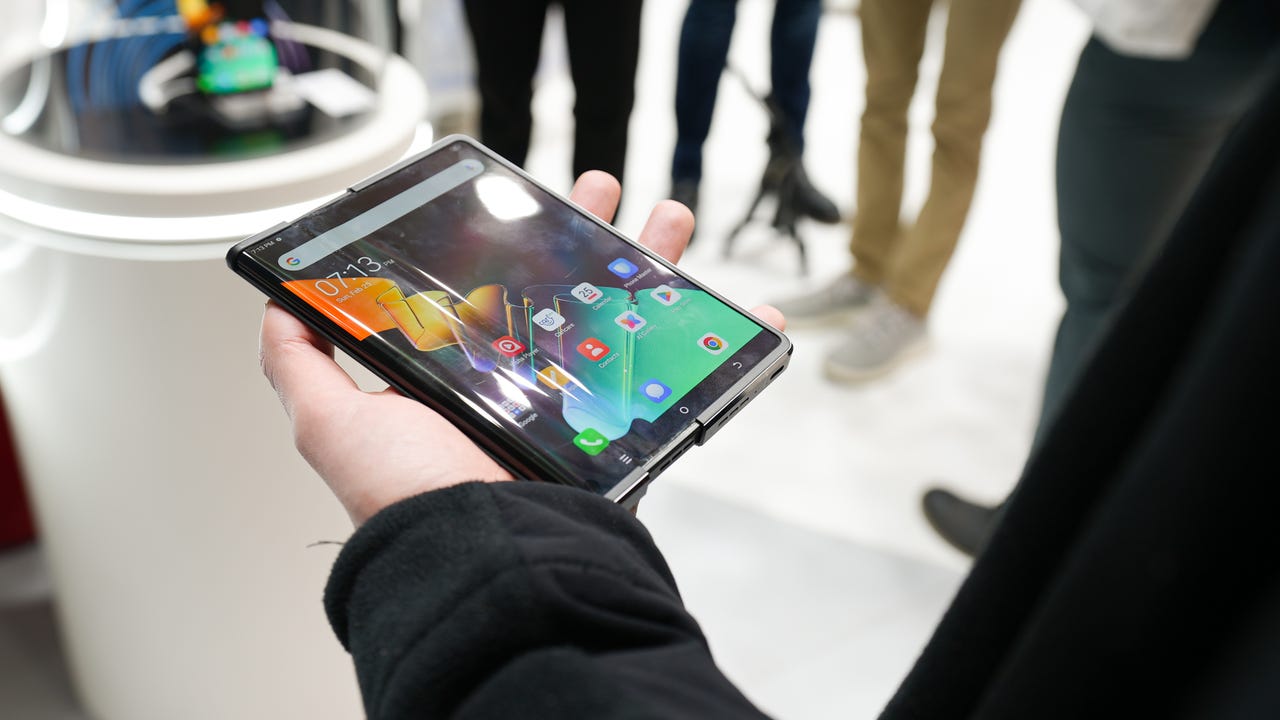I tried a rollable phone for the first time, and it made even my foldable feel outdated

The amount of ambitious, forward-looking gadgetry that I've come across during my time at MWC has been a tech enthusiast's dream. My first two days alone included bendable smartphones and laser-shooting lapel pins. Add to that list a phone with a rollable display.
Also: Best gadgets I saw at MWC 2024: Smart rings, concept phones, transparent laptops
It's called the Phantom Ultimate from a Chinese technology company, Tecno. The phone is the very definition of a concept, with a 6.55-inch flexible OLED display that, with a press of a button, rolls horizontally to become a 7.11-inch size. There's also a fun surprise on the back of the device, which I'll get to in a moment.
I spent about 30 minutes fidgeting with one of the working models Tecno had on the show floor, and it made even my OnePlus Open feel outdated.
That's in large part due to the motorized nature of a rollable phone. As I mentioned before, you don't expand the display by physically pulling it out. Instead, you either press a button on the top of the device or do a three-finger swipe gesture. I found the latter hit or miss, but when it worked, it felt like magic.
Also: The most jaw-dropping demo at MWC was from a brand I wasn't expecting to see
Seeing a phone display expand on its own -- with the text and visuals gradually covering more surface area -- is like watching your [insert favorite satisfying video here]. I wish Tecno pushed the limits a little more with the concept as going from a 6.55-inch display to a 7.11-inch is no revelation. Going from smartphone form factor to mega tablet would be outrageous in the best way.
Regardless, the added real estate was noticeable as I switched between messaging apps, the browser, and a video player. Working with spreadsheets? Roll out the display to see more data at a glance!
The display of the Phantom Ultimate is easily the focal point of Tecno's concept, with a 2296 x 1596 resolution, dynamic LTPO (meaning the refresh rate will dial between 1Hz to 120Hz depending on how animated the task is), and full support of the DCI-P3 wide color gamut. Would I recommend the device for professional content creation and graphics design? Probably not, given how reflective the thin, flexible glass display is, but I was on a brightly lit convention floor, so visuals may be more perceivable elsewhere.
Also: The best MWC products coming to the US this year
There's one other cool factor to the Phantom Ultimate and that's the back display. It reminds me of Samsung's Edge Panels but for when you set your phone face down and want glanceable information.
The one caveat with a rollable design is how scratch-prone the flexible glass material can be, as the units Tecno had at its booth demonstrated. Another concern is the longevity of the motorized display; specifically, how many times can the phone open and close before a screw loosens and things get twitchy. A Tecno representative tells me the Phantom Ultimate has been tested to withstand 50,000 cycles, with the expectation that a user would roll the display in and out eight times daily.
The big question is: When will rollable concepts like the Phantom Ultimate hit the market? Tecno says it's still gauging user interest, especially in emerging markets like Southeast Asia, Africa, and Eastern Europe, so there's no definite timetable. For what it's worth, Motorola appears to still be committed to its rollable phone that debuted at MWC last year, and I'm hearing that a 2026 release is the goal.
Disclosure: The cost of Kerry Wan's travel to Barcelona for Mobile World Congress was covered by Tecno, a common industry practice for long-distance trips. The judgments and opinions of ZDNET's writers and editors are always independent of the companies we cover.
